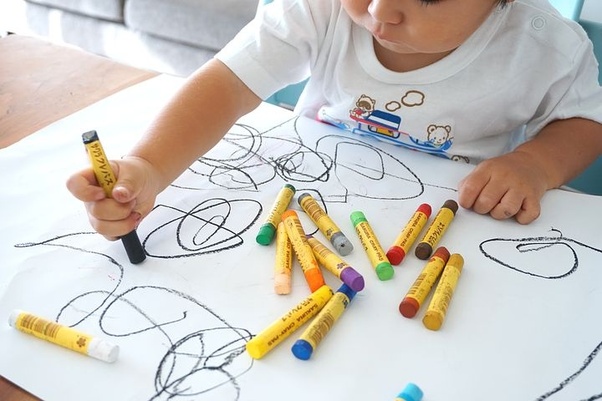As an adult you may see a scribble, as an ECE I can see a master piece.
Scribbling is a fundamental and important activity in early childhood education due to its various developmental benefits and role in fostering creativity and cognitive growth in young children. Although seemingly random and unstructured, scribbling plays a crucial role in the developmental stages of children and serves as an initial step towards the development of writing and drawing skills. Here are several reasons why scribbling is vital in early education:
Fine Motor Development: Scribbling helps children develop fine motor skills, which are essential for tasks like writing, drawing, and manipulating objects. Holding a crayon or pencil and making marks on paper strengthens the small muscles in the fingers and hands, improving coordination and control.
Cognitive Development: The act of scribbling encourages cognitive development by stimulating the brain and promoting hand-eye coordination. Children learn cause and effect as they observe the marks they make with their scribbles.
Language Development: Scribbling can also be linked to language development. Children often narrate stories or describe their scribbles, which enhances vocabulary and communication skills.
Creativity and Expression: Scribbling provides an outlet for creativity and self-expression. Children use scribbling as a way to convey their thoughts, feelings, and experiences before they have mastered language.
Confidence Building: Allowing children to scribble freely without judgment builds their confidence and encourages them to explore their artistic abilities. Positive reinforcement from caregivers or teachers reinforces a child’s belief in their abilities.
Pre-Writing Skills: Scribbling is a precursor to writing. It helps children understand that lines and shapes can represent objects and ideas. As children progress from random scribbling to controlled lines and shapes, they begin to develop the foundational skills necessary for writing and drawing.
Emotional Development: Scribbling can be a soothing and therapeutic activity for young children, helping them manage emotions and express feelings they may not be able to articulate verbally.
Social Development: Scribbling can also be a social activity when children engage in group drawing or collaborate on artwork. This fosters social interaction, cooperation, and sharing among peers.
Foundation for Artistic Skills: Early scribbling lays the groundwork for more complex artistic skills in the future. It helps children understand concepts like color, shape, and texture.
In conclusion, scribbling is a valuable activity in early childhood education that supports holistic development in various areas including physical, cognitive, emotional, social, and artistic domains. Encouraging and nurturing children’s scribbling activities can have a lasting positive impact on their overall growth and development, making it an essential component of early education programs.



Comments are closed